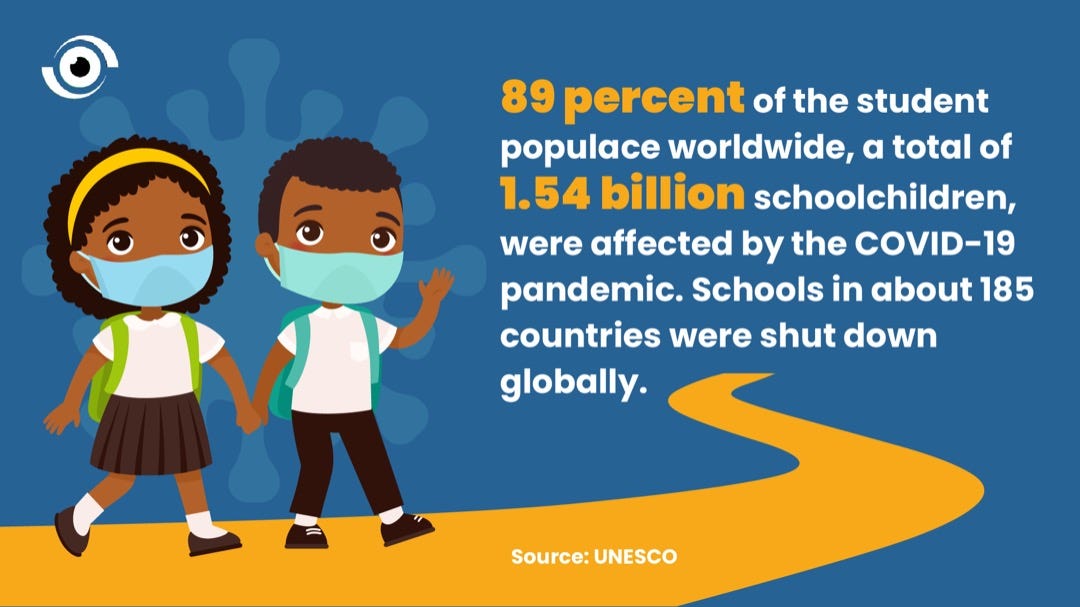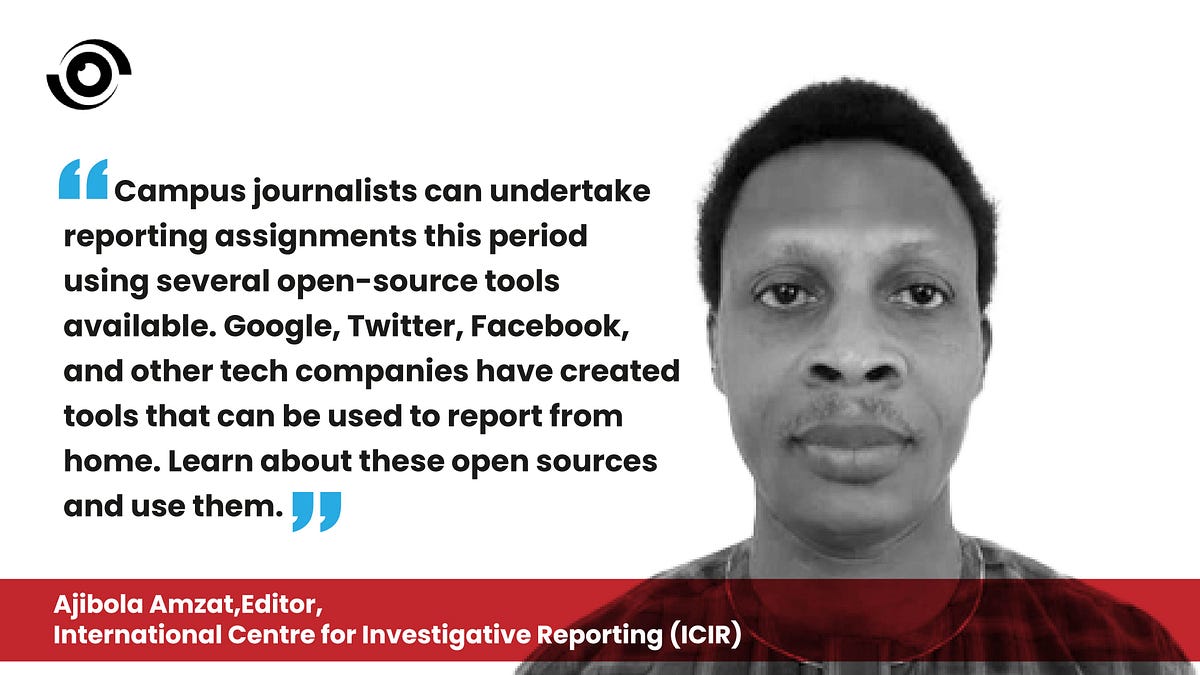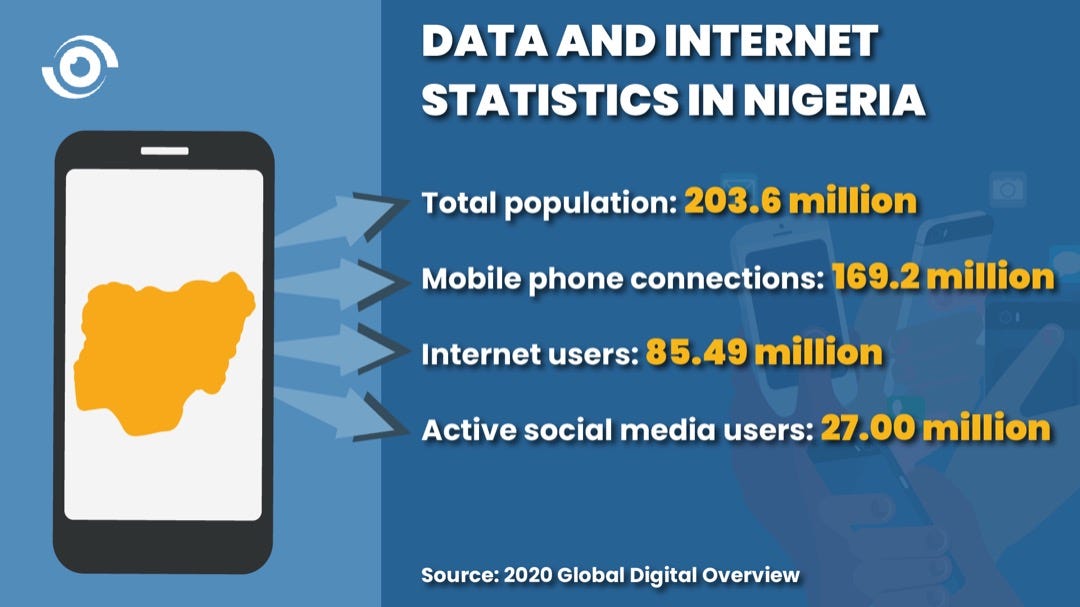As COVID-19 hit Nigeria, concerns grew for many journalists as to how they were to report on the pandemic which affected every sphere of life. Most media pages and airtime slots were filled with reports about COVID-19 cases and precautions on how the disease could be prevented.
Given that COVID-19 is a disease caused by a new strain of the coronavirus, journalists, especially those with little experience in reporting health, issues faced some challenges. One of these journalists is Oluwatobi Odeyinka, a campus journalist and 200-level student of the University of Ibadan. Odeyinka said he never imagined that he would report on a pandemic.
For Odeyinka, knowledge about the pandemic was a grey area but he had to carry on with his reportorial duties, particularly at a period when schools across the country were shut down.
To update his knowledge on health reporting, Odeyinka signed up for virtual training programmes that helped him understand how to accurately report the pandemic. “There are insights I learnt from the webinars and training I attended even though I have a background in journalism,” Odeyinka who went on to report four COVID-19 news articles said.
His challenge was similar to that of Kehinde Ogunyale, a final year student of the Moshood Abiola Polytechnic, Abeokuta. Ogunyale leveraged the insights shared during a fact- checking training hosted on WhatsApp, to publish a fact check report on the first COVID-19 mobile laboratory in Africa a few days after.

Reporting from the frontline: Journalists as public health responders?
Before the pandemic, understanding the basics of health reporting was a challenge for Ogunyale. He said he always believed health reporting was strictly for professionals.. As as the novel coronavirus spreads across the world, uncertainties around COVID-19 case definitions, symptoms, treatment, vaccines, individual and corporate responses continue to grow.
Everyone turned to health professionals and the government for guidance on the prevention and management of the disease. Media outlets and journalists across the world became key public health players, helping shape perceptions of risks by providing adequate and reliable information to communities to protect lives.
Filling the knowledge gap created by school closures
As the disease spreads, most journalists became health reporters because of the global nature of the disease and its impact on every sector of the society. There were concerns about whether journalists could report COVID-19 accurately and responsibly. Hannah Ryder, the CEO of Development Reimagined, an independent international development consultancy said, “Reporting on people who have COVID-19 is vital — but if done incorrectly, it can create social harm.”
It was for these reasons that Ogunyale sought training that could help him report health issues and the pandemic accurately. Ogunyale said the training wasa big leap for him. “I constantly involved myself in training that could expose me,” he said. He learnt idea conceptualisation and development, data analysis and reporting from these classes which helped his COVID-19 reportage reporting.
“These trainings enhanced report writing, and helped me explore other platforms and opportunities to report,” he said. Some of the stories he wrote during the lockdown include the invasion of Lagos and Ogun communities by ‘one million boys’ and how citizens took to entrepreneurship in the wake of the compulsory use of face masks.
But Odeyinka and Ogunyale didn’t receive these training in classrooms. Nigerian students were out of schools as a result of the global pandemic. With school closures in 185 countries due to COVID-19, over 89% of total students enrolled globally were out of school. This represents about 1.54 billion children and youths enrolled in school or university, including nearly 743 million girls.

Virtual training for COVID-19 reportage: An innovative solution
Journalists and student writers needed training and resources that could guide their COVID-19 reporting to avoid misinforming the public. These training would have been provided in schools and from crash courses on health reporting but restrictions on movement and closure of schools during lockdowns rendered this impossible.
The WHO, United Nations Children’s Fund (UNICEF), and International Committee of the Red Cross (ICRC) created a special guide for journalists on preventing and addressing social stigma. Apart from these guidelines, non-profits across the globe took up the challenge to train journalists on reporting COVID-19.
Organisations across the globe called the attention of journalists to online reporting guides. They include the Committee to Protect Journalists (CPJ)’s Safety Advisory: Covering the coronavirus outbreak, Poynter’s AP Stylebook tips on the coronavirus, The Open Notebook’s Tipsheet: Covering the Coronavirus Epidemic Effectively without Spreading Misinformation, GIJN’s Investigating the Pandemic, First Draft’s Covering Coronavirus, Thomson Foundation and Dart Centre’s Reporting on COVID-19: SAFETY, Knight Centre’s Journalism in a Pandemic.
Nonprofits in Nigeria and Africa also provided training on COVID-19 and health reporting. Journalists in Nigeria leveraged the resources and training provided by the Nigeria Centre for Disease Control (NCDC), International Press Centre (IPC), Youth Digest, Media Career Development Network (MCDN), I-79 Media Consults and Code for Africa.
Student Associations also invited experts to train their members on COVID-19 reporting between March and June 2020. They included the National Union of Campus Journalists (NUCJ), the Association of Campus Journalists (ACJ) of the Obafemi Awolowo University (OAU), Press Club MAPOLY (PCM) of Moshood Abiola Polytechnic, Abeokuta and Pen Press UDUS, an affiliate pressboard of the National Association of Campus Journalists (NACJ), and Usman Dan Fodio University, Sokoto.
These COVID-19 reportage training were conducted virtually across various social media platforms, including WhatsApp, Twitter, Facebook, Telegram and Zoom.

Online open source tools increase efficiency of COVID-19 reportage
Ajibola Amzat, Editor, International Centre for Investigative Reporting (ICIR), in one of the training noted that “Campus journalists can undertake reporting assignments this period using several open-source tools available. Google, Twitter, Facebook, and other tech companies have created tools that can be used to report from home. Learn about these open sources and use them.” Tips from Amzat and other facilitators helped Odeyinka, Ogunyale and other journalists to scale up their knowledge of the pandemic.
As a non-health reporter who wrote a story highlighting how politicians hijacked distribution of palliatives, Odeyinka said the training helped him incorporate his investigative skills on issues on the pandemic.“This is a period when people need to be well informed. The business of journalism cannot stop, even though it has become dangerous. We must continue serving the people informative and educational content and assisting them in staying safe,” he said.
“Learning to use open-source information otherwise known as user-generated content via social media to conduct research also came in handy,” Odeyinka added.
Kafilat Taiwo, an HND student of Moshood Abiola Polytechnic also chronicled the state of primary health centres in Ogun State, adding that the training helped her to demystify journalism. “I realised that journalism isn’t as difficult as we think. As a journalist, I could get news stories from reliable sources at my own convenience. Pictures are very important in news reporting, I was still able to get them by going into the field and from open source platforms,” she said.

A litany of challenges
The training also provided an opportunity to fill the gap left by school closures. Jamiu Abiodun, a 300-level political science student of Usman Dan Fodio University, Sokoto (UDUS), agreed that webinars became tools to gain requisite skills since schools were closed. “The online training exposed me to some of the best hands I will ordinarily not be able to have access to. The kind of training that will require rigorous selection processes were made readily available to us. It’s indeed revealing,” he said.
He said the pandemic has shown that the intersection between media and technology is inevitable. “In the next few years, we won’t have to travel to different locations for training. It tells us we can sit in the comfort of our rooms and receive top-notch trainings from the best hands in the industry,” Abiodun said. He later reported on how poor awareness frustrated the use of face masks in the fight against COVID-19.
WhatsApp’s two billion global users, Zoom’s 50% increase from 200 million users in April and Twitter’s rise to 166 million daily users during the pandemic, provided leverage for these young journalists to report on health and particularly the pandemic.

Abiodun added however that the inherent challenges of poor electricity, poor internet connectivity and poor digital literacy amongst many Nigerians meant that physical training still has important roles in the future. These challenges also kept many young journalists from being able to access the online training.
It was for these reasons Jennifer Matthews, a campus journalist at the University of Benin (UNIBEN) missed out on these training. Matthews had gone to stay at her uncle’s house in Oyo State when schools were closed. She was unable to join most of the online training and resources because of poor power supply in the area where she lived.
Still, online training can be harnessed for incredible impact. “Except for poor internet connectivity which is quite a constraint, online training is a good way to learn. The webinars have continued to help me and have improved my skills,” Adesola Ikulajolu, who offered journalists tips on COVID-19 reporting, said. He is a freelance journalist and President of National Association of Mass Communication Students (NAMACOS), Adekunle Ajasin University.
What other ways can journalists reporting on the COVID-19 pandemic be supported and trained? Let us know in the comments below or on our social media platforms; @nighealthwatch on Twitter, and @nigeriahealthwatch on Facebook, Instagram, and LinkedIn.


